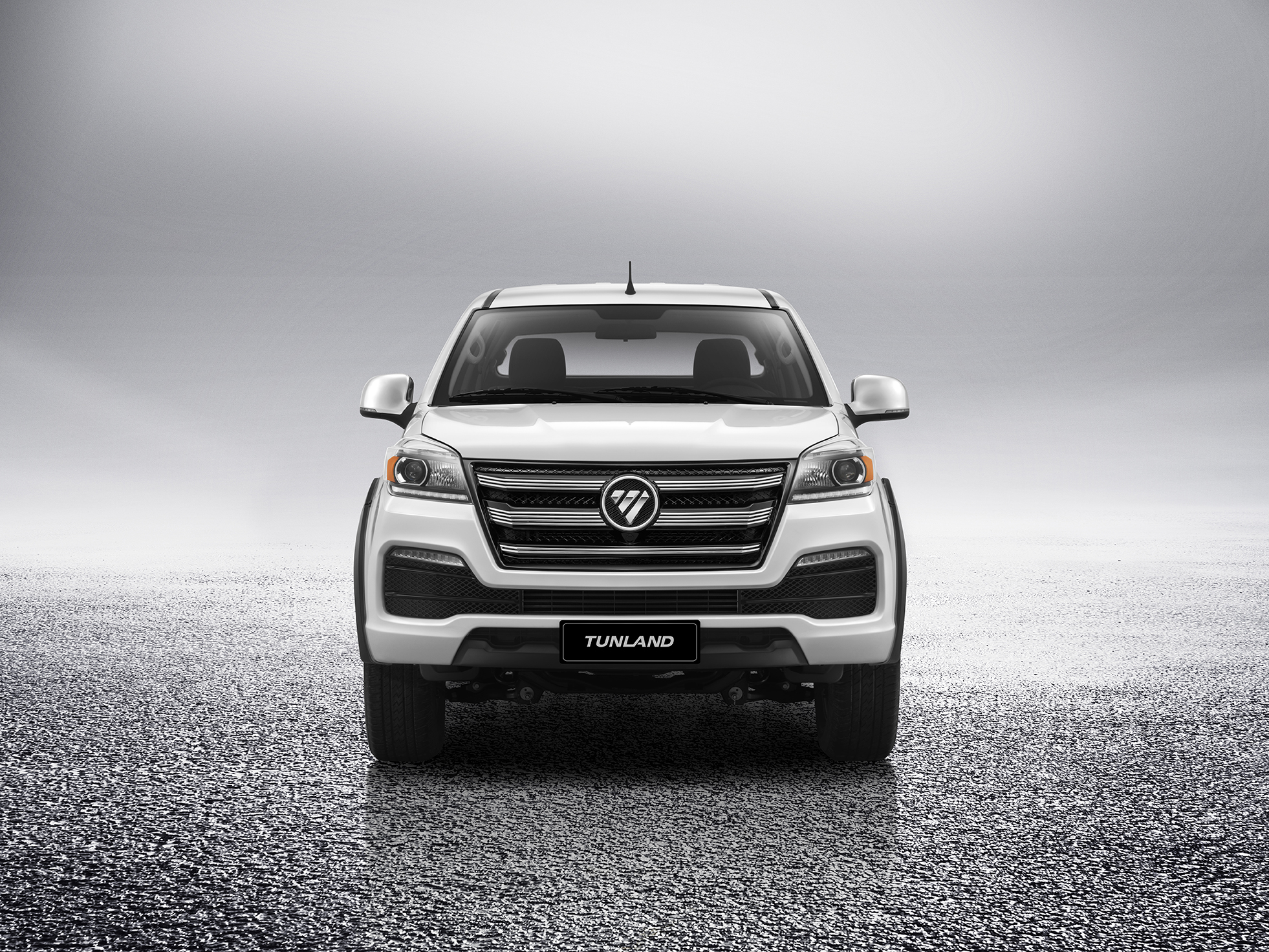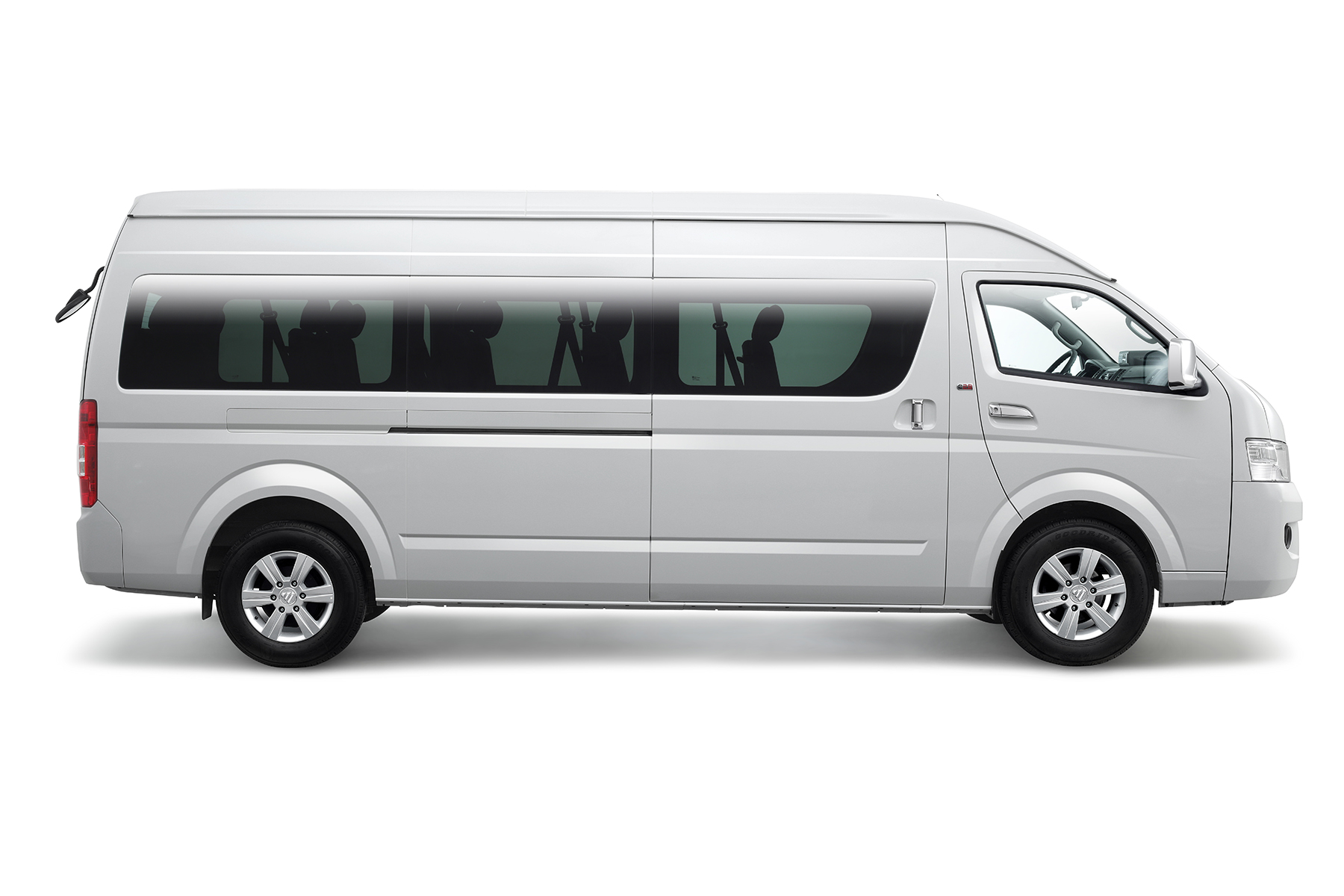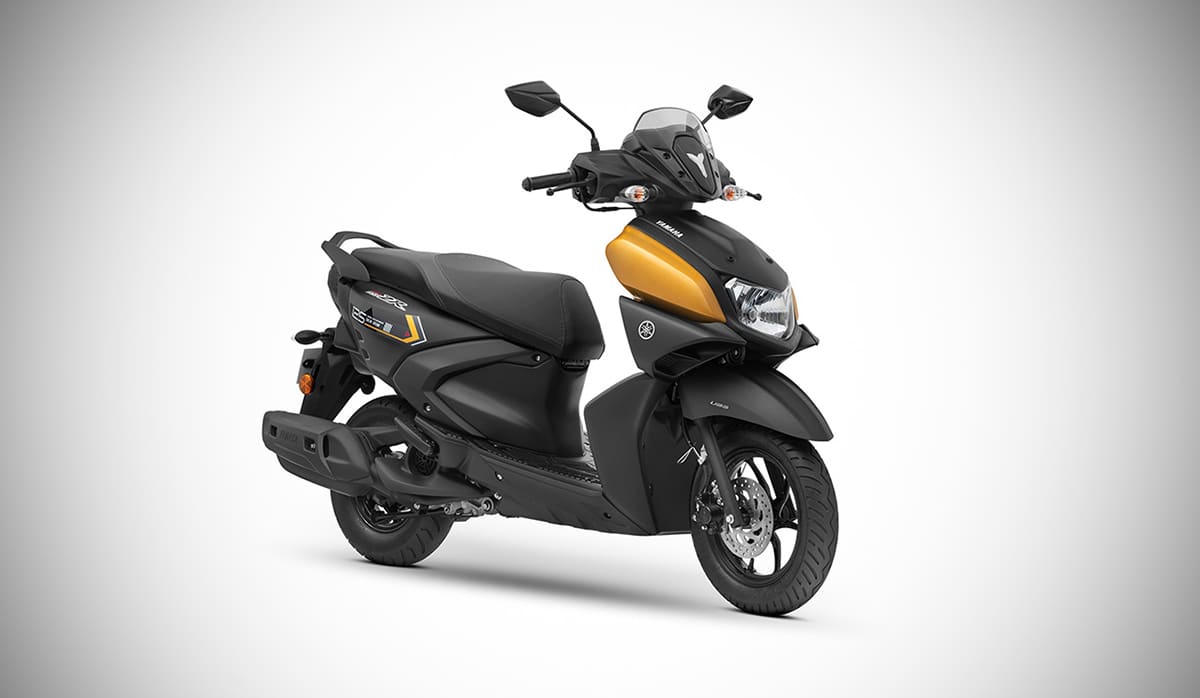Three exciting vehicles debuting in Nepal
One of the world’s fastest growing automobile brands, Foton has a record of an accumulative production and sales volume of over 9.6 million vehicles since its establishment in 1996. As per its recent financial report, its brand value is $23.4 billion.
The company is a 50:50 joint venture between BIAC and Daimler, the world’s largest CV manufacturers. Similarly, it has a strategic partnership with ZF, the world's no. 1 transmission system manufacturer as Foton ZF and a strategic partnership with Cummins as Foton Cummins. Foton products are available in 110 countries and has 27 CKD factories internationally.
MAW Vriddhi is the commercial vehicle division of MAW Group of Companies, which is an exclusive distributor in Nepal of many international automotive brands including Yamaha, JCB, Skoda, and Jeep. With the Tunland E and CS2L, Foton is now eyeing a significant market share in Nepal.
Foton Tunland E

The Foton Tunland E is a luxurious compact pickup sold by the Chinese manufacturer Foton Motor, sold in China as well as Australasia, Colombia, and emerging markets. Foton says the Tunland E combines the power, performance, and reliability of established, globally-reputed brands for its major drivetrain elements. The double cab pick-up comes with a premium design, upgraded technology features and performance, higher levels of interior quality, and improved comfort compared to the outgoing model. It gets new headlights with LED DRLs, a new front bumper and grille, and chunkier wheel-arch flares.
The new generation 2.8L engine with max power rating reaches 113 bhp at 3,600 rpm. With newly added Variable Geometric turbocharger (VGT) system and a high-pressure common-rail, it increases the max torque of 280 Nm at 2,400 rpm with low speed scope to improve the transient response ability and reduce fuel consumption.
The Tunland E will be Foton’s entry into the competitive pick-up market.
Foto View CS2L

The Foto View CS2L is the only 19-seater van in the country.
On the outside, the micro-van features a chrome grill, aluminium alloy rim, fully closed side window, and chrome plating on the rear-view mirror and the doorknob. Comfort and convenience features include a rear AC vent and a reverse camera.
The Foton View CS2 is also equipped with a four-channel ABS + EBD, upgraded brake lights, electric mirrors, an anti-glare rear-view mirror, as well as additional devices to ensure road safety. Dual airbags, a collapsible steering column, and three-point seat belts are standard features that ensure the safety of the driver and passengers. It features a roof emergency escape hatch and a safety hammer with which the window can be broken in case of an emergency.
Powered by a 2,800cc Cummins diesel engine, the View CS2 makes 147 bhp of power and 330 Nm of torque. Foton says the powertrain is based on a modular design concept i.e. it has 40 percent fewer components than similar other products. The View CS2 is available in various configurations to suit the customer’s needs.
The new BS6 Ray ZR 125 FI

After the Fascino 125 FI BS6, Yamaha Nepal is all set to add a second BS6 scooter to its portfolio. The BS6 Yamaha Ray ZR 125 FI will be launched digitally, using IoT and Artificial Intelligence, making it a one-of-a-kind virtual event in the Nepali auto landscape. Surprisingly, Yamaha is the only manufacturer to launch successive BS6 models in the country.
The 2020 Yamaha Ray ZR 125 FI BS6 gets a noticeable cosmetic upgrade compared to the outgoing model. It now gets a Y-shaped LED position light, new front apron, and new livery. In terms of features, it has a new digital instrument cluster, a Stop and Start system, Smart Motor Generator for a quieter start-up, Side Stand Engine Cut-off Switch, and a Unified Braking System. It continues to be powered by the same engine from the Fascino 125 FI, which makes 8.2 PS of max power at 6,500 rpm and a peak torque of 9.7 Nm at 5,000 rpm.
Yamaha NMAX 155: The maxi-scooter
Would you be willing to sell your everyday commuter motorcycle and replace it with a scooter? How about if we tell you that it’s a maxi-scooter? But, what if you had to shell out more cash to acquire the said maxi-scooter, in addition to the money you received from selling your old motorcycle? Made you think, huh?
Here’s what we’re getting at. We have with us, the Yamaha NMAX: Yamaha’s 155cc offering from its ‘X’ scooter family. For those who remember, the NMAX is reminiscent of the Kinetic Blaze when it plied the streets of Kathmandu over a decade ago. Its power figures surpass those returned by the majority of motorcycles in the 150cc segment. Further, it is the first scooter to feature fuel injection, and dual channel ABS in Nepal.
Anyone presuming the NMAX to be just another scooter would be gravely mistaken. The NMAX is the Mr. Hyde of the scooter world; a kind, well-respected scooter that happened to meddle with the dark side of automotive mechanism and thus transformed into its alter ego that’s significantly larger, more powerful, and exhibits evil intent.
Styling and Design
Appearance-wise, the Yamaha NMAX 155 is a handsome devil. And it’s well built.
The NMAX looks good on the biggest person we have in our office and for a scooter that prides itself on size, that is a compliment. We are talking about a person so large, he makes the Bajaj Dominar look like a Pulsar 150. Our point being, the Yamaha NMAX is a big boy maxi-scooter.
It has a two tone body color, and a smooth flowing design, giving it a European flare. The bulbous front gets a large single unit, twin eye, headlamp flanked by side indicators on the body panel. The lines that define the NMAX aren’t very aggressive, but neither is it a dull design. If Yamaha were looking to hit that middle of the road, ‘timeless’ look with the styling, they have achieved it.
The seats are large and comfortable, good enough to keep your rear ends well rested on your daily excursions. The ergonomics are also relaxed and easy going. Footrests are large and you have the option of changing your feet placement to a relaxed or higher up position for a more cruiser experience. While we’re not completely sold on the cruiser-style foot placement, we definitely like the acres of legroom that you get.
As motorcycle riders reviewing a maxi scooter, we really liked that the fuel tank cab is up front, and between your legs. There will be none of that ‘getting off your seat and flipping it up to refuel’ nonsense anymore.
When you will be flipping open the seat is to stow away your helmet or your belongings. You can just accommodate a full faced helmet in the space provided. You also get easy to read LCD instruments, including a bar type fuel gauge, speedo, clock, and fuel economy data.
The Yamaha NMAX runs on sizable rubber with 230mm front and rear rotors, with single piston calipers.
Performance
When you first sit astride the rather large frame of the Yamaha NMAX 155 you still expect it to perform like your run of the mill scooter. However, you will be pleased to know that the NMAX is no slouch. It’s quick to get off the mark and continues to provide decent power throughout the rev ranges. That’s thanks to the 155cc SOHC single-cylinder engine that churns out 14.9hp and 14.9Nm of torque. Its Blue Core engine also features a variable valve actuation, which is set to enhance efficiency of power delivery.
On the road the NMAX 155 handles well. It’s stable and feels firmly planted on straights. Thanks to the grippy tires, you also get the confidence to take on the turns. Bumps and potholes are subdued with the help of a twin shock rear suspension system and smooth-action telescopic front forks. Stopping duties are undertaken by the 230mm front and rear discs with ABS, which further enhances the rider’s confidence.
We’ve always felt that safety wise, scooters do not belong on the highways. However, we can definitely see ourselves going on long haul rides with the Yamaha NMAX 155. This is one of the few ‘scooters’ (maxi-scooters) in which we would feel comfortable riding the highways. That is mainly thanks to the quick delivery of the powerful and sharp ABS equipped brakes.
Verdict
Again, the Yamaha NMAX 155 isn’t your average scooter. It’s the Mr. Hyde to every Dr. Jekyll scooter.
You get more power, more comfort, and an overall better driving experience. All positives in our book. However, you have to wrap your head around the price tag of Rs 459,900, which can be challenging.
The ‘maxi-scooter’ is still a young product concept for the Nepali market. Ahead of it is the task of shrugging off the “still a scooter” mentality that people could have about the NMAX. Then it has the difficult duty of encroaching the new-fangled notion that a scooter can have a serious touring prospect.
Nevertheless, we are positive about the future of maxi-scooters in Nepal. We loved the experience of riding it around town and the bigger highways. We might even consider switching out a smaller commuter motorcycle for the comforts and riding amusement of the Yamaha NMAX 155—if only we could get around that price.
SPECIFICATIONS
Displacement: 155cc
Cylinders: Single cylinder
Max Power: 14.9BHP @ 8,000 rpm
Maximum Torque: 14.4 Nm @ 6,000 rpm
Front Brake Type: Hydraulic single disc, 230mm
Rear Brake Type: Hydraulic single disc, 230 mm
Fuel Tank: 6.6 liters
Price: Rs 459,900
Google’s $349 Pixel 4a trying to undercut iPhone SE, not just on price
Google is adding a new, compact-sized Pixel 4a to its smartphone portfolio. The good news is that Pixel 4a won’t hurt your wallet, as the phone starts at $349 in the US, making it the cheapest Pixel-branded smartphone ever.
The Pixel 4a is aimed at budget-conscious consumers who don’t have the money to buy Pixel 4 or Pixel 4 XL, Google’s latest flagship devices. For the price, the Pixel 4a is a compelling purchase—at least for those who do not want features like multiple cameras and higher refresh rate displays in a smartphone.
The company informs that the Pixel 4a is built on the same idea as the last year’s Pixel 3a, and the idea is to bring the “best of Google hardware, software and AI” to more consumers at an accessible price point. But this time, the Pixel 4a is launching at a time when consumers are hit hard by the coronavirus pandemic. With most people cutting down discretionary spending, the $349 price tag of Pixel 4a might just convince them to upgrade to a new smartphone. It’s the same tactic Apple recently applied with the second-generation iPhone SE, which starts at $399.
Many would think that Google has made compromises to launch the Pixel 4a at a low price, but that’s not true. Google took the best out of Pixel 4 and cut features on Pixel 4a. The new low-cost phone has a 5.8-inch FHD+ OLED screen with minimum top and bottom bezels. Google says the screen size is increased by 4.5 per cent compared to the Pixel 3a, while the overall device size is decreased by 5.8 per cent. The 5.8-inch screen is neither too small nor too big for a modern-day smartphone. The Pixel 4a is not a small phone, but compact enough to use one-handed. At the same time, Google has managed to fit a faster Snapdragon 730G processor, meaning the phone will run all the games and apps that many expensive Android smartphones do.
The price of Pixel 4a, though, is its strongest selling point. However, the Pixel 4a faces tough competition from the iPhone SE, which has been well received by consumers.
In fact, Apple saw iPhone sales increased in Q3 2020, largely due to the “very successful” release of the low-cost iPhone SE in April. It remains to be seen how well the Pixel 4a is received, in US and internationally, with a price that already dramatically undercuts Apple’s iPhone SE. The Pixel 4a is expected to officially arrive in South East Asian markets by October.
(Agencies)
Google’s $349 Pixel 4a trying to undercut iPhone SE, not just on price
Google is adding a new, compact-sized Pixel 4a to its smartphone portfolio. The good news is that Pixel 4a won’t hurt your wallet, as the phone starts at $349 in the US, making it the cheapest Pixel-branded smartphone ever.
The Pixel 4a is aimed at budget-conscious consumers who don’t have the money to buy Pixel 4 or Pixel 4 XL, Google’s latest flagship devices. For the price, the Pixel 4a is a compelling purchase—at least for those who do not want features like multiple cameras and higher refresh rate displays in a smartphone.
The company informs that the Pixel 4a is built on the same idea as the last year’s Pixel 3a, and the idea is to bring the “best of Google hardware, software and AI” to more consumers at an accessible price point. But this time, the Pixel 4a is launching at a time when consumers are hit hard by the coronavirus pandemic. With most people cutting down discretionary spending, the $349 price tag of Pixel 4a might just convince them to upgrade to a new smartphone. It’s the same tactic Apple recently applied with the second-generation iPhone SE, which starts at $399.
Many would think that Google has made compromises to launch the Pixel 4a at a low price, but that’s not true. Google took the best out of Pixel 4 and cut features on Pixel 4a. The new low-cost phone has a 5.8-inch FHD+ OLED screen with minimum top and bottom bezels. Google says the screen size is increased by 4.5 per cent compared to the Pixel 3a, while the overall device size is decreased by 5.8 per cent. The 5.8-inch screen is neither too small nor too big for a modern-day smartphone. The Pixel 4a is not a small phone, but compact enough to use one-handed. At the same time, Google has managed to fit a faster Snapdragon 730G processor, meaning the phone will run all the games and apps that many expensive Android smartphones do.
The price of Pixel 4a, though, is its strongest selling point. However, the Pixel 4a faces tough competition from the iPhone SE, which has been well received by consumers.
In fact, Apple saw iPhone sales increased in Q3 2020, largely due to the “very successful” release of the low-cost iPhone SE in April. It remains to be seen how well the Pixel 4a is received, in US and internationally, with a price that already dramatically undercuts Apple’s iPhone SE. The Pixel 4a is expected to officially arrive in South East Asian markets by October.
(Agencies)

















